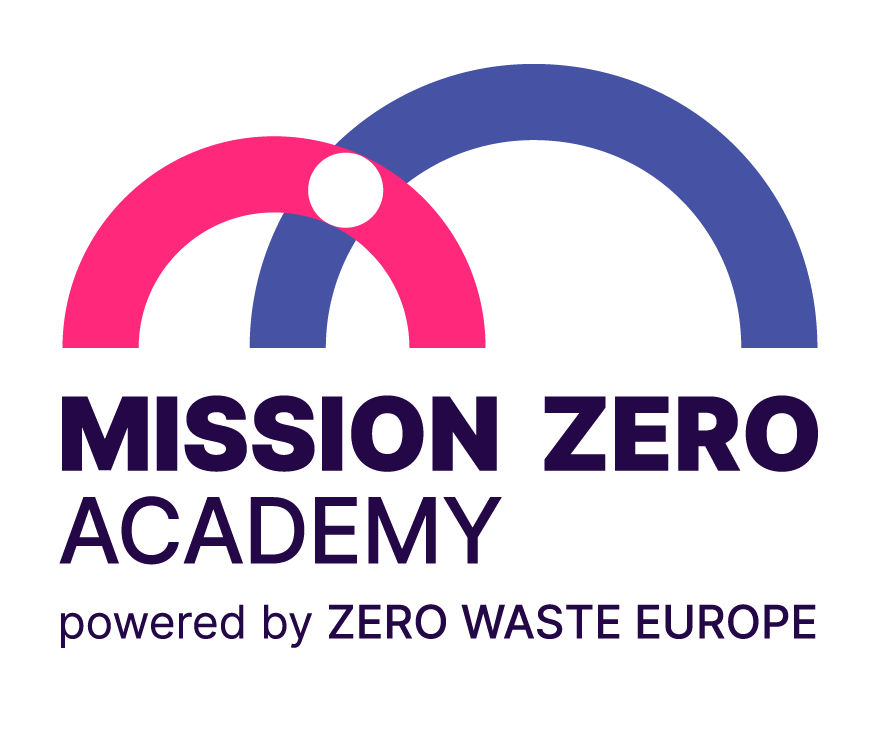In our current traditional linear economy, we take natural resources from the planet, turn them into products, ship them all over the world, and eventually dispose of these as waste into landfills, incinerators or even the environment. This “take-make-waste” pattern is detrimental to our climate, and ultimately, people and our Mother Earth.
For these reasons, the EU adopted an action plan for a Circular Economy in 2015 to break the pattern and move to a society where waste is eliminated, resources are recirculated, and nature is regenerated. Find out why zero waste is an essential step in achieving circularity and why many cities already have adopted this approach.
What exactly is a circular economy?
In a circular economy, it is implied that waste will itself become a resource, consequently minimizing the actual amount of waste we produce. The European Parliament describes it as: “A production and consumption model which involves reusing, repairing, refurbishing and recycling existing materials and products to keep materials within the economy wherever possible.”
The European Union adopted circularity as their critical guiding principle to improve resource management, industrial growth, and sustainable consumption and production. It’s based on four principles:
- Modifying production and consumption habits
- Improving waste management
- Enabling the secondary raw material market
- Stimulating the economy and creating jobs
In other words, it is possible to simultaneously combat climate change and biodiversity loss in a circular economy and meet critical social needs. It allows us to increase prosperity, jobs, and resilience while reducing greenhouse gas emissions, waste, and pollution.
Why zero waste is an essential step in the journey towards a circular economy
Even though the EU is moving towards being a “Resource Efficient Europe”, there are still a lot of challenges to overcome. According to research, the EU has achieved only 12% circularity, which means 88% of used resources aren’t yet recovered after use. Globally, we are only 8.6% circular, according to the 2020 Circularity Gap Report.
Among the challenges faced, the most pressing question is how to implement it on the ground. As it turns out, zero waste offers an answer for transforming the circular economy narrative into practical solutions. With over 400 municipalities committed to zero waste strategies across Europe, it is already proving to be the perfect embodiment of circularity at the local level.
Setting standards for waste management and recycling systems
Recycling and waste management are essential components of any circular economy. Recent amendments to the EU waste legislation has led to targets and recommendations for waste management and recycling. These include extending separate collection requirements to other waste streams, like biowaste by the end of 2023, textiles by the end of 2024, and adopting waste prevention plans.
The objectives are the same for all 27 member states of the EU. However, it’s still up to local governments to observe and address their consequences and obligations. Responsibility for implementation sits on the shoulders of cities and municipalities, given that this is where waste management competency is often needed.
Zero waste drives action beyond compliance
The growing number of zero waste cities in Europe is proof these European obligations and targets are not just attainable but can be exceeded. Not only concerning waste prevention policies, but also by increasing recycling capacities, and promoting sustainable and decent waste treatment systems, resulting in a reduction of the so-called “take-make-waste” pattern.
The key is to make both prevention and reuse the new normal, by analyzing waste streams and redesigning products, in addition to increasing the efficiency of collection and recycling. Making things last longer and creating packaging that can be refilled and reused makes environmental and common sense.
Additionally, across Europe, cities with zero waste plans have seen increases in separate waste collection rates and a decrease in the level of residual waste generated by residents. They achieve good results in many important circular economy aspects, such as reuse centres and community composting. Therefore, zero waste cities are not only ensuring compliance with European Union legislation, but they are going far beyond this.
Become a Zero Waste Certified City though MiZA
To create real impact, we must transform every aspect of the take-make-waste system: how we manage resources, how we create and use products, and what we do with them afterwards. Only then can we realize a circular economy that benefits everyone within the limits of our planet.
If you would like more information and support in your journey towards zero waste, consider becoming zero waste certified through MiZA. This independent, third party assessed certification standard had been designed to:
- help municipalities to comply (and go beyond) with EU and national regulations;
- promote the implementation of efficient systems which save natural and economic resources, as well as
- reinforce the positive image of the municipality, which will gain worldwide recognition and credibility. This in turn results in job creation, funding opportunities, economic incentives, and prestigious event hosting attraction.
Through its online training platform and the support of a network of local zero waste experts, MiZA offers a supportive package to help you in your zero waste and circular economy implementation at the municipal level.
This article is based upon Zero Waste Europe’s guide, ‘Creating a methodology for zero waste municipalities.’





